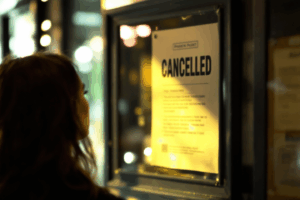
Present Simple Tense 1
English Blogs “Let’s Learn, Explore, and Connect to the World” Present Simple Tense 1 I. Introduction to the Present Simple Tense in English Mastering the


 The Past Perfect Continuous Tense, an often-overlooked aspect of English grammar, is essential for expressing a nuanced view of the past. It combines the complexity of the past with the continuous aspect, offering a lens through which we can examine ongoing actions and situations leading up to a specific point in the past. By mastering this tense, you can add depth, clarity, and sophistication to your language skills, enabling you to communicate complex ideas about the past with ease.
The Past Perfect Continuous Tense, an often-overlooked aspect of English grammar, is essential for expressing a nuanced view of the past. It combines the complexity of the past with the continuous aspect, offering a lens through which we can examine ongoing actions and situations leading up to a specific point in the past. By mastering this tense, you can add depth, clarity, and sophistication to your language skills, enabling you to communicate complex ideas about the past with ease.
The structure of the Past Perfect Continuous is straightforward yet signifies deep temporal relationships. It consists of the auxiliary verb “had,” followed by “been,” and the present participle of the main verb (verb+ing). For example:
Affirmative: She had been waiting for over an hour when he finally arrived.

Negative: They had not been sleeping well before the new mattress arrived.

Interrogative: Had you been working on the project long before it was canceled?

Conceptually, the Past Perfect Continuous Tense is used to express actions or situations that were ongoing up to a certain point in the past. It emphasizes the duration of the action and its relevance to a past time or another action. This tense is particularly useful for highlighting the continuity of past activities, their duration, and their impact on subsequent events.
 Understanding the temporal aspect of the Past Perfect Continuous is key. It places emphasis on the process or duration of past actions rather than their completion. This aspect makes it distinct from the Past Perfect Tense, which focuses more on the completion of past actions before another past moment.
Understanding the temporal aspect of the Past Perfect Continuous is key. It places emphasis on the process or duration of past actions rather than their completion. This aspect makes it distinct from the Past Perfect Tense, which focuses more on the completion of past actions before another past moment.
The Past Perfect Continuous often implies a cause-effect relationship between a prolonged past activity and a state or action at a later point in the past. For example, the sentence “He was exhausted because he had been running” suggests that the running occurred over a period in the past and had a direct effect on the state of exhaustion.
 When using the Past Perfect Continuous, it’s important to consider whether the focus is on the action’s duration leading up to another event or its completion. If the emphasis is on the outcome or completion, the Past Perfect Tense might be more appropriate. However, if the focus is on the ongoing nature of the past action, the Past Perfect Continuous is the better choice.
When using the Past Perfect Continuous, it’s important to consider whether the focus is on the action’s duration leading up to another event or its completion. If the emphasis is on the outcome or completion, the Past Perfect Tense might be more appropriate. However, if the focus is on the ongoing nature of the past action, the Past Perfect Continuous is the better choice.

To emphasize the duration of an action that was interrupted by another event: “I had been reading for two hours when the phone rang.”

To explain conditions resulting from past actions: “Her eyes were red because she had been crying.”
These examples highlight how the tense can be used to add depth and detail to past narratives, making them more vivid and nuanced.

A common mistake with the Past Perfect Continuous is using it interchangeably with the Past Perfect Tense without considering the emphasis on duration versus completion. Another error is neglecting the continuous aspect by using the wrong verb form; always ensure the main verb ends in -ing.
To master the Past Perfect Continuous Tense, practice using it in various contexts, focusing on situations where the duration or ongoing nature of a past action is significant. Pay attention to the temporal relationships between events and how this tense can help clarify cause-effect connections in the past.
In summary, the Past Perfect Continuous Tense offers a powerful tool for expressing the duration and implications of past actions up to a specific point. By understanding and applying this tense effectively, you can enhance your storytelling, provide clarity, and enrich your communication about past events. Embrace the nuances of the Past Perfect Continuous, and take your English language skills to new heights.

English Blogs “Let’s Learn, Explore, and Connect to the World” Present Simple Tense 1 I. Introduction to the Present Simple Tense in English Mastering the

English Blogs “Let’s Learn, Explore, and Connect to the World” Present Simple Tense 2 II. Understanding the Present Simple Tense Definition and Structure At its
Discover the joy of conversation with “Comic Collections: A Compilation of Daily Professional and Casual Conversations,” a whimsically illustrated comic book that transforms talking into an adventure. Ideal for those eager to polish their chatting skills, this light-hearted guide is a trove of insights presented in a uniquely entertaining format.



